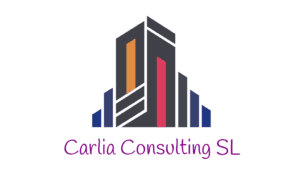Every day we hear financial concepts on the street, in the news, newspapers, and conversations. But they are not always perfectly understood since financial education in almost all countries has been and continues to be very low. Therefore, we want to present to you in a very brief and simple way the meaning of some of the basic financial concepts so that you can speak, read and ultimately understand simple economic concepts. Speak as a Financial Expert within 10 minutes.
INTEREST: SIMPLE vs. COMPOUND
Interest is the cost of borrowing money or the reward for saving it.
- Simple Interest: This is calculated only on the initial amount, known as the principal. For example, if you invest $100 at a simple interest rate of 5% per year, after one year, you will earn $5. The interest earned each year remains constant.
- Compound Interest: This is calculated on the principal amount and also on the accumulated interest of previous periods. For example, if you invest $100 at a compound interest rate of 5% per year, compounded annually, after one year you will earn $5, but in the second year, you will earn interest on $105, and so on. This causes your investment to grow faster over time because the interest earned each period also earns interest in subsequent periods.
PASSIVE INCOME
Passive income is money earned with little to no effort on the part of the recipient. It’s often contrasted with active income, which is money earned from working.
Common sources of passive income include:
- Rental Income: Money earned from renting out property.
- Dividends: Payments made by a corporation to its shareholders, usually as a distribution of profits.
- Royalties: Earnings from intellectual property such as books, music, or patents.
- Interest Income: Earnings from investments like bonds or savings accounts.
Passive income is crucial for achieving financial independence because it allows you to earn money without having to actively work for it, providing financial security and freedom.
LOAN AMORTIZATION
Loan amortization refers to the process of paying off a loan over time through regular payments. These payments are typically made monthly and cover both the principal amount (the original loan) and the interest.
Over the life of an amortized loan:
- Early payments mostly go toward paying interest.
- As the loan term progresses, more of each payment goes toward reducing the principal balance.
For example, in a 30-year mortgage, in the beginning, the majority of your monthly payment will be applied to interest. By the end of the loan term, most of the payment will go toward the principal.
SUPPLY and DEMAND
Supply and demand are fundamental economic concepts that describe the relationship between the availability of a product and the desire for that product.
- Supply: The amount of a product or service that is available to consumers. Higher supply typically lowers prices if demand remains constant.
- Demand: The amount of a product or service that consumers are willing and able to purchase at a given price. Higher demand typically increases prices if supply remains constant.
The interaction between supply and demand determines the market price of a good or service. For instance, if there is a high demand for electric cars but a limited supply, the price of electric cars will likely increase.
INFLATION and DEFLATION
- Inflation: This is the rate at which the general level of prices for goods and services rises, leading to a decrease in purchasing power. For example, if the inflation rate is 3%, something that costs $100 today will cost $103 next year. Inflation can be caused by factors such as increased demand, higher production costs, and expansion of the money supply.
- Deflation: The opposite of inflation, deflation occurs when the general level of prices for goods and services decreases, increasing the purchasing power of money. While this might sound good, it can lead to reduced consumer spending, as people wait for prices to fall further, potentially causing economic slowdown and increased unemployment.
GROSS DOMESTIC PRODUCT (GDP)
Gross Domestic Product (GDP) measures the total economic output of a country. It is the sum of all goods and services produced over a specific time period, usually a year or a quarter.
GDP can be calculated using three approaches:
- Production Approach: Sums the value added at each stage of production.
- Income Approach: Sums the incomes generated by production.
- Expenditure Approach: Sums the total spending on the nation’s final goods and services.
GDP is used to gauge the health of an economy. A rising GDP indicates economic growth, while a falling GDP may signal economic trouble.
CREDIT vs. DEBIT CARDS
- Credit Cards: Allow you to borrow money up to a certain limit to make purchases or withdraw cash. You must repay the borrowed amount later, typically with interest if not paid in full by the due date. Credit cards can help build your credit score but can also lead to debt if not managed responsibly.
- Debit Cards: Withdraw money directly from your bank account to pay for purchases or withdraw cash. Since the money comes directly from your account, you can only spend what you have, which helps prevent debt but does not help build your credit score.
RECESSION and ECONOMIC DEPRESSION
- Recession: A recession is a significant decline in economic activity that lasts for more than a few months. It is typically visible in GDP, real income, employment, industrial production, and wholesale-retail sales. Recessions are a normal part of the economic cycle and can be caused by various factors, including high interest rates, reduced consumer confidence, and decreased business investment.
- Economic Depression: A more severe and prolonged downturn than a recession. Depressions are characterized by significant declines in GDP, high unemployment rates, falling prices (deflation), and widespread business failures. The Great Depression of the 1930´s is the most notable example.
BALANCE of PAYMENTS
Balance of Payments (BOP) is a record of all financial transactions made between consumers, businesses, and the government in one country with others. It includes:
- Current Account: Records trade in goods and services, income from investments, and transfers.
- Capital Account: Records net change in ownership of national assets.
- Financial Account: Records investments in financial assets such as stocks and bonds.
The BOP helps understand a country’s economic relationships with the rest of the world and is essential for economic planning and policy-making.
FISCAL DEFICIT and SURPLUS
- Fiscal Deficit: Occurs when a government’s total expenditures exceed its total revenues, excluding money from borrowings. This gap is often covered by borrowing, leading to an increase in public debt. Fiscal deficits can stimulate economic growth during a recession but can also lead to higher debt levels.
- Fiscal Surplus: Happens when a government’s revenues exceed its expenditures. A surplus can be used to pay down existing debt or saved for future needs. Surpluses are generally seen as indicators of good economic management but can also mean the government is not investing enough in the economy.
MONETARY and FISCAL POLICY
- Monetary Policy: Managed by a country’s central bank, it involves controlling the money supply and interest rates to influence economic activity. Tools include open market operations, discount rates, and reserve requirements. For example, lowering interest rates can stimulate borrowing and spending, boosting economic activity.
- Fiscal Policy: Involves government spending and tax policies to influence the economy. Expansionary fiscal policy, like increasing government spending or cutting taxes, aims to boost economic activity. Contractionary fiscal policy, such as reducing spending or increasing taxes, aims to cool down an overheated economy.
STOCK MARKET
The stock market is a marketplace where shares of publicly held companies are bought and sold. It provides companies with access to capital in exchange for giving investors a slice of ownership.
Key components include:
- Stock Exchanges: Platforms where stocks are traded (e.g., NYSE, NASDAQ).
- Stock Prices: Determined by supply and demand, reflecting the company’s perceived value.
- Dividends: Regular payments made to shareholders out of a company’s profits.
The stock market is crucial for economic growth, as it allows companies to raise funds for expansion and innovation while offering investors the opportunity to earn returns.
CURRENCIES and EXCHANGE RATES
- Currencies: Official money systems used in different countries (e.g., USD, EUR, JPY). They facilitate trade and economic transactions.
- Exchange Rates: Determine how much one currency is worth in terms of another. Influenced by factors like interest rates, economic stability, and government debt, exchange rates affect international trade and investment. For example, if the exchange rate for USD to EUR is 1.2, it means 1 USD can be exchanged for 1.2 EUR.
PUBLIC DEBT
Public debt is the total amount of money that a government owes to creditors. This can include domestic and international borrowing. Public debt is used to finance government spending that exceeds revenue from taxes and other sources.
- Advantages: Can stimulate economic growth by funding infrastructure projects, education, and other public goods.
- Disadvantages: High levels of debt can lead to increased borrowing costs and limit a government’s ability to respond to economic crises.
Effective management of public debt is crucial for maintaining economic stability and investor confidence.
SAVINGS and INVESTMENTS
- Savings: The portion of income not spent on current expenditures. Savings can be kept in a bank account, where it earns interest, providing a safety net for emergencies and future expenses.
- Investments: Using your savings to buy assets like stocks, bonds, or real estate with the goal of generating returns over time. Investments carry more risk than savings but offer the potential for higher returns. Diversification, or spreading investments across different assets, can help manage risk.
CREDIT and RETURN ON INVESTMENT
- Credit: The ability to borrow money or access goods or services with the understanding you’ll pay later. It’s essential for making significant purchases like homes and cars and for businesses to finance expansion. Good credit management leads to a high credit score, making it easier to borrow money at favorable terms.
- Return on Investment (ROI): Measures the gain or loss generated relative to the amount invested. The formula is:
ROI=Net ProfitCost of Investment×100ROI=Cost of InvestmentNet Profit×100
For example, if you invest $1,000 in stocks and earn a profit of $200, your ROI is 20%. ROI helps assess the efficiency of an investment.
PERFECT COMPETITION, MONOPOLY and OLIGOPOLY
- Perfect Competition: A market structure where many firms offer identical products, and no single firm can influence the market price. Characteristics include a large number of small firms, identical products, and easy entry and exit. Consumers benefit from lower prices and better quality due to high competition.
- Monopoly: A market structure where one firm dominates the market. This firm can influence prices and output. Monopolies can lead to higher prices and less innovation due to lack of competition. Governments often regulate monopolies to protect consumers.
- Oligopoly: A market structure where a few large firms control the market. These firms may collude to set prices and output, leading to higher prices and reduced competition. Examples include the automotive and airline industries.
ECONOMIES of SCALE and OPPORTUNITY COST
- Economies of Scale: Occur when increased production leads to lower costs per unit. As a company grows and produces more, it can spread its fixed costs over a larger number of units, reducing the cost per unit. This can provide a competitive advantage by allowing the company to lower prices or increase profits.
- Opportunity Cost: The potential gain lost when choosing one alternative over another. For example, if you spend $1,000 on a vacation instead of investing it, the opportunity cost is the potential return you could have earned from that investment. Understanding opportunity cost helps in making informed decisions by considering the benefits of the next best alternative.
MARGINAL UTILITY and ECONOMIC CYCLES
- Marginal Utility: The additional satisfaction or utility gained from consuming one more unit of a good or service. It typically decreases as more units are consumed. For example, the first slice of pizza may bring great satisfaction, but by the fourth or fifth slice, the additional satisfaction is likely to be less.
- Economic Cycles: The natural fluctuations of the economy between periods of expansion (growth) and contraction (recession). Key phases include:
- Expansion: Increasing economic activity, rising GDP, and falling unemployment.
- Peak: The height of economic activity before a downturn.
- Contraction: Decreasing economic activity, falling GDP, and rising unemployment.
- Trough: The lowest point of economic activity before a recovery.
Understanding economic cycles helps businesses and policymakers make informed decisions to mitigate the effects of economic downturns and leverage periods of growth.
TARIFFS, SUBSIDIES and FREE MARKET
- Tariffs: Taxes imposed on imported goods and services. They are used to protect domestic industries from foreign competition, generate revenue, and sometimes as a political tool. However, tariffs can lead to higher prices for consumers and retaliatory measures from other countries.
- Subsidies: Financial support provided by the government to businesses, industries, or individuals. They can help lower the cost of production, encourage investment, and support sectors deemed important for national interest. While subsidies can stimulate economic activity, they can also distort markets and lead to inefficiencies.
- Free Market: An economic system where prices for goods and services are determined by open competition between privately owned businesses, with minimal government intervention. The free market encourages efficiency, innovation, and consumer choice. However, it can also lead to inequality and market failures without some level of regulation.
These expanded explanations should provide a more comprehensive understanding of each financial concept. Understanding these terms will help you make better financial decisions and navigate the economic landscape more effectively.
If you liked this post we invite you to read the importance of Kids financial education.
Watch this post and others on our Youtube Channel @CarliaConsulting:


